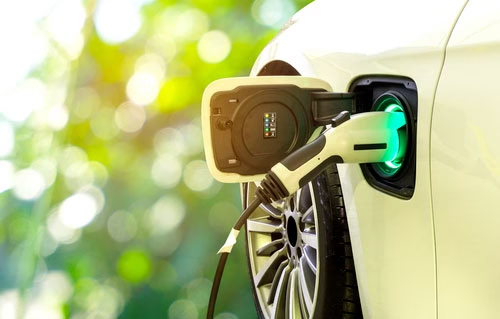Key Takeaways:
- Eco-friendly vehicles are gaining popularity due to environmental and economic benefits.
- Innovations in electric and hybrid technologies are leading the charge in green initiatives.
- Understanding various eco-friendly vehicle options can help consumers make informed choices.
- The worldwide market for electric vehicles is increasing swiftly due to favorable policies and expanding infrastructure.
Introduction
As global communities become increasingly conscious of their environmental footprint, the demand for new car dealers offering eco-friendly vehicle options is rising. This demand is driven by both environmental concerns and the economic benefits these vehicles present. Eco-friendly vehicles promise reduced emissions and a significant shift toward sustainability that aligns with the values of an increasing number of consumers. From electric cars to hybrids, the automotive industry is pioneering a revolution, paving the way for greener roads and a healthier planet.
The shift from gasoline-powered cars to sustainable alternatives comes at a critical time when climate change is at the forefront of global policy agendas. With the rapid advancement of technology and the consumer’s increasing demand for innovative and efficient solutions, the automotive landscape is undergoing a significant transformation. Understanding the multifaceted benefits and potential challenges of these innovations is crucial for those looking to make informed decisions about their next vehicle purchase, paving the way for a more sustainable future.
The Rise of Electric Vehicles (EVs)

Electric vehicles (EVs) have surged in popularity recently, becoming nearly synonymous with environmentally friendly driving. Initially a niche market led by early adopters, electric vehicles (EVs) are now in the spotlight as improvements in battery technology and extended range per charge make them more practical for the average consumer. The push toward electrification is further supported by improvements in EV infrastructure, such as the expansion of charging stations in urban areas and along major highways, which ensures that accessibility concerns are addressed. Car dealerships Orlando are increasingly offering a wide range of electric vehicles, making it even easier for consumers to switch to cleaner driving options. This growth in infrastructure addresses one of the major hurdles—”range anxiety,” which is the fear of running out of charge on the go. As charging networks become more comprehensive and charging speeds increase, the convenience factor shifts dramatically in favor of electric vehicles. Government initiatives, subsidies, and favorable policies also complement technological advancements, encouraging manufacturers and consumers to embrace electric mobility.
Hybrid Vehicles: A Bridging Technology
Hybrid vehicles are a critical transition technology between traditional combustion engines and full electrification. Hybrids enhance fuel efficiency and reduce harmful emissions by combining gasoline and electric motors. This technology captures the interest of drivers who want an eco-friendly option without fully committing to electric vehicles, offering a comfortable compromise by delivering a balance of performance, cost savings, and environmental responsibility. According to AFDC, hybrid vehicles utilize both an internal combustion engine and an electric motor, allowing them to switch between the two energy sources according to driving conditions. Hybrids utilize techniques such as regenerative braking, which captures energy that would otherwise be lost during braking, to improve energy efficiency. This not only reduces environmental impact but also garners fuel savings. The availability and familiarity of hybrid technology make it an excellent stepping stone for consumers to ease into the realm of greener vehicles.
Benefits of Eco-Friendly Vehicles
Eco-friendly vehicles offer substantial benefits that contribute to a more sustainable future. One of the most compelling aspects is their significant reduction in carbon footprints. Lower emissions result in cleaner air, which positively impacts public health, particularly in urban areas. At first glance, these vehicles might appear to have premium price tags. Still, they often lead to substantial long-term savings on fuel and maintenance, thanks primarily to their reduced mechanical complexity.
Governments worldwide recognize these economic and environmental benefits and offer incentives such as tax credits, rebates, and access to carpool lanes. These benefits recognize and incentivize eco-conscious actions, rendering green vehicles a financially appealing choice for a broader audience, in line with a wider societal movement toward sustainability.
Challenges in Mainstream Adoption
Despite their advantages, eco-friendly vehicles have encountered challenges to mainstream adoption. Despite technological progress, “Range anxiety” remains a significant issue for electric vehicle drivers.
However, these concerns diminish as charging infrastructure expands and battery technologies improve. Cost also remains a barrier for many potential buyers, despite prices gradually decreasing due to economies of scale and technological advancements.
Another challenge is the complexity of transitioning an entire infrastructure from fossil fuels to electricity, which requires coordinated efforts from governments, industry, and consumers. Fortunately, as stakeholders continue to invest in research and development, these barriers are expected to diminish, paving the way for broader adoption worldwide.
Global Policies Encouraging Eco-Friendly Vehicles
Government policies significantly impact the adoption of eco-friendly vehicles. Various countries are implementing regulations and incentives that create favorable environments for electric and hybrid cars. Norway is a leader, offering extensive incentives such as tax reductions, public charging infrastructure, and toll exemptions, which make EVs highly attractive. In many countries, the evolving global electric vehicle policy tracker reveals strengths and areas for improvement as nations push towards sustainable automotive futures.
Proactive policy implementation in regions worldwide can significantly reduce the industry’s carbon footprint. Still, areas lagging in policy measures may slow down the potential global impact, underscoring the necessity for cohesive global efforts toward cleaner transportation.
Consumer Considerations When Purchasing
Selecting the appropriate eco-friendly vehicle involves understanding various personal and logistical factors. Buyers must consider their typical driving range, access to home or public charging, and budget constraints. Understanding the differences between fully electric vehicles, hybrids, and plug-in hybrids can empower consumers to make decisions that best suit their environmental goals and transportation needs.
Consumers should consider the available infrastructure and regional incentives that may influence their decision. This awareness helps smooth the transition into eco-friendly driving by allowing consumers to experience the benefits of reduced emissions and cost savings while minimizing potential inconveniences.
Conclusion: The Road Ahead
The journey toward greener transportation solutions is complex yet promising, with eco-friendly vehicles representing a decisive step toward sustainability. As technology and infrastructure evolve, electric and hybrid cars will become more accessible and practical choices for an increasingly significant population segment. The combined efforts of consumers, manufacturers, and policymakers will ensure that this trend not only endures but also thrives. The automotive industry’s future is undoubtedly electric, and by embracing this change, society makes significant strides toward a more sustainable and environmentally responsible world.
Our mission is to provide readers with expert insights, practical advice, and the latest trends in business, technology, lifestyle, and more. We aim to inspire and empower our audience with high-quality articles that are both engaging and educational.


